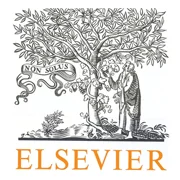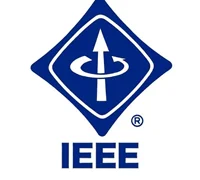دانلود ترجمه مقاله یک مدل تصمیم گیری سلسله مراتبی برای اولویت بندی تکنولوژی های تولید پراکنده
| عنوان فارسی |
یک مدل تصمیم گیری سلسله مراتبی برای اولویت بندی تکنولوژی های تولید پراکنده: یک مطالعه موردی از ایران |
| عنوان انگلیسی |
A hierarchical decision making model for the prioritization of distributed generation technologies: A case study for Iran |
| کلمات کلیدی : |
تکنولوژی های تولید پراکنده؛ فرآیند سلسله مراتبی تحلیلی (AHP)؛ ایران |
| درسهای مرتبط | شبکه هوشمند |
| تعداد صفحات مقاله انگلیسی : 12 | نشریه : ELSEVIER |
| سال انتشار : 2009 | تعداد رفرنس مقاله : 29 |
| فرمت مقاله انگلیسی : PDF | نوع مقاله : ISI |
|
پاورپوینت :
ندارد سفارش پاورپوینت این مقاله |
وضعیت ترجمه مقاله : انجام نشده است. |
1. مقدمه 2. چارچوب استراتژیک پیشنهادی 3. مشخصه های ارزیابی 4. فرآیند سلسله مراتبی تحلیلی (AHP) 5. مطالعه موردی: ایران 6. نتیجه گیری

چکیده – هدف این مقاله، ارائه یک مدل ارزیابی برای اولویت بندی تکنولوژی های تولید پراکنده (DG)، هم متداول و هم تجدیدپذیر، برای ارضای افزایش بار ناشی از نرخ رشد در ایران در کنار در نظر گرفتن موضوع توسعه پایدار می باشد. استراتژی تصمیم گیری سلسله مراتبی پیشنهادی، از دیدگاه شرکت توزیع (DisCo) و تولیدکننده مستقل توان (IPP) به عنوان یک نهاد خصوصی، ارائه شده است. امروزه، DG اصطلاح پرکاربردی است که تکنولوژی های متعددی را پوشش می دهد، با این حال، یافتن یک تکنولوژی DG منحصر به فرد که مفروضات متعددی چون مشخصه های اقتصادی، فنی و محیطی را در نظر بگیرد، کار دشواری است. برای این منظور، یک رویکرد تصمیم گیری چندمشخصه ای (MADM) برای ارزیابی جایگزین هایی برای تکنولوژی DG با توجه به مشخصه های اقتصادی، فنی و محیطی شان مورد استفاده قرار گرفته است. علاوه بر این، یک مشخصه انرژی اولیه منطقه ای نیز در سلسله مراتب گنجانده شده تا پتانسیل انواع مختلف منابع انرژی در مناطق تحت مطالعه بیان گردد. اولویت به دست آمده تکنولوژی های DG، به تصمیم گیرندگان در هر منطقه در راستای نحوه تخصیص بودجه سرمایه گذاری کلی شان برای تکنولوژی های مختلف، کمک می کند. با توجه به آنالیز انجام شده، مشاهده می شود که توربین های گازی، غالباً بهترین تکنولوژی برای سرمایه گذاری در مناطق مختلف ایران می باشند. در انتهای فرآیند تصمیم گیری، یک آنالیز حساسیت بر اساس مقررات دولتی برای نشان دادن نحوه تاثیر تغییرات اوزان مشخصه ها روی اولویت های جایگزین های DG انجام شده است. این چارچوب تحلیلی پیشنهادی در هفت بخش از ایران با شرایط آب و هوایی و منابع انرژی مختلف، پیاده سازی شده است.
The purpose of this paper is to present an assessment and evaluation model for the prioritization of distributed generation (DG) technologies, both conventional and renewable, to meet the increasing load due to the growth rate in Iran, while considering the issue of sustainable development. The proposed hierarchical decision making strategy is presented from the viewpoint of either the distribution company (DisCo) or the independent power producer (IPP) as a private entity. Nowadays, DG is a broadly-used term that covers various technologies; however, it is difficult to find a unique DG technology that takes into account multiple considerations, such as economic, technical, and environmental attributes. For this purpose, a multi-attribute decision making (MADM) approach is used to assess the alternatives for DG technology with respect to their economic, technical and environmental attributes. In addition, a regional primary energy attribute is also included in the hierarchy to express the potential of various kinds of energy resources in the regions under study. The obtained priority of DG technologies help decision maker in each region how allocate their total investment budget to the various technologies. From the performed analysis, it is observed that gas turbines are almost the best technologies for investing in various regions of Iran. At the end of the decision making process, a sensitivity analysis is performed based on the state regulations to indicate how the variations of the attributes’ weights influence the DG alternatives’ priority. This proposed analytical framework is implemented in seven parts of Iran with different climatic conditions and energy resources.



دیدگاهها
هیچ دیدگاهی برای این محصول نوشته نشده است.